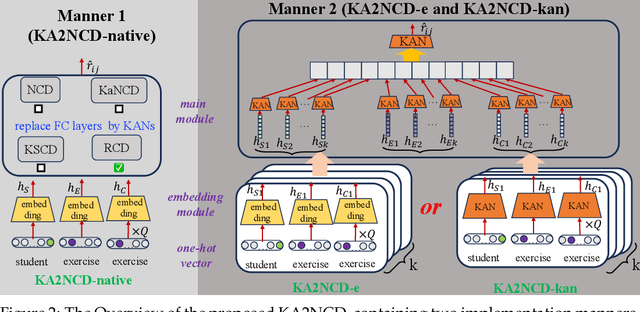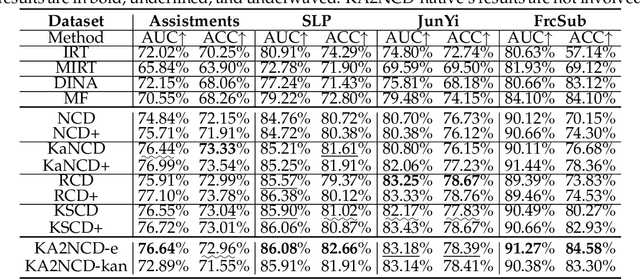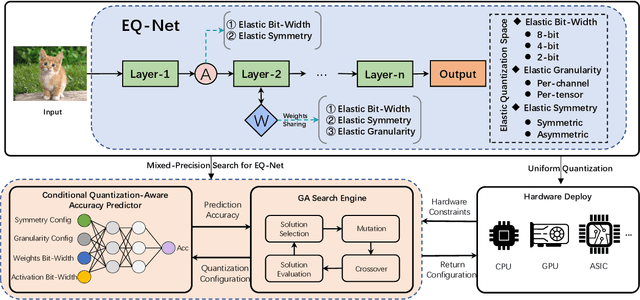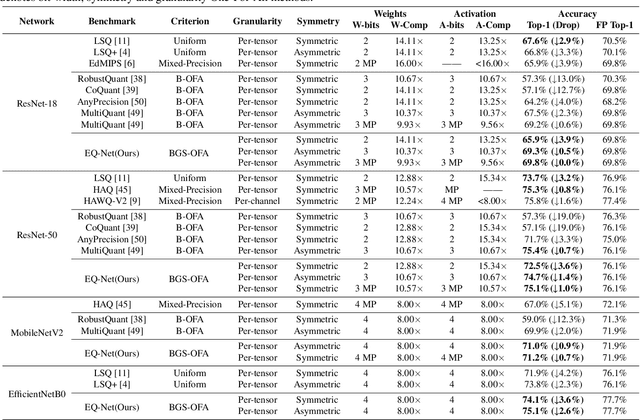Shangshang Yang
Generating time-consistent dynamics with discriminator-guided image diffusion models
May 15, 2025Abstract:Realistic temporal dynamics are crucial for many video generation, processing and modelling applications, e.g. in computational fluid dynamics, weather prediction, or long-term climate simulations. Video diffusion models (VDMs) are the current state-of-the-art method for generating highly realistic dynamics. However, training VDMs from scratch can be challenging and requires large computational resources, limiting their wider application. Here, we propose a time-consistency discriminator that enables pretrained image diffusion models to generate realistic spatiotemporal dynamics. The discriminator guides the sampling inference process and does not require extensions or finetuning of the image diffusion model. We compare our approach against a VDM trained from scratch on an idealized turbulence simulation and a real-world global precipitation dataset. Our approach performs equally well in terms of temporal consistency, shows improved uncertainty calibration and lower biases compared to the VDM, and achieves stable centennial-scale climate simulations at daily time steps.
Supporting renewable energy planning and operation with data-driven high-resolution ensemble weather forecast
May 07, 2025Abstract:The planning and operation of renewable energy, especially wind power, depend crucially on accurate, timely, and high-resolution weather information. Coarse-grid global numerical weather forecasts are typically downscaled to meet these requirements, introducing challenges of scale inconsistency, process representation error, computation cost, and entanglement of distinct uncertainty sources from chaoticity, model bias, and large-scale forcing. We address these challenges by learning the climatological distribution of a target wind farm using its high-resolution numerical weather simulations. An optimal combination of this learned high-resolution climatological prior with coarse-grid large scale forecasts yields highly accurate, fine-grained, full-variable, large ensemble of weather pattern forecasts. Using observed meteorological records and wind turbine power outputs as references, the proposed methodology verifies advantageously compared to existing numerical/statistical forecasting-downscaling pipelines, regarding either deterministic/probabilistic skills or economic gains. Moreover, a 100-member, 10-day forecast with spatial resolution of 1 km and output frequency of 15 min takes < 1 hour on a moderate-end GPU, as contrast to $\mathcal{O}(10^3)$ CPU hours for conventional numerical simulation. By drastically reducing computational costs while maintaining accuracy, our method paves the way for more efficient and reliable renewable energy planning and operation.
Generative assimilation and prediction for weather and climate
Mar 04, 2025Abstract:Machine learning models have shown great success in predicting weather up to two weeks ahead, outperforming process-based benchmarks. However, existing approaches mostly focus on the prediction task, and do not incorporate the necessary data assimilation. Moreover, these models suffer from error accumulation in long roll-outs, limiting their applicability to seasonal predictions or climate projections. Here, we introduce Generative Assimilation and Prediction (GAP), a unified deep generative framework for assimilation and prediction of both weather and climate. By learning to quantify the probabilistic distribution of atmospheric states under observational, predictive, and external forcing constraints, GAP excels in a broad range of weather-climate related tasks, including data assimilation, seamless prediction, and climate simulation. In particular, GAP is competitive with state-of-the-art ensemble assimilation, probabilistic weather forecast and seasonal prediction, yields stable millennial simulations, and reproduces climate variability from daily to decadal time scales.
DisenGCD: A Meta Multigraph-assisted Disentangled Graph Learning Framework for Cognitive Diagnosis
Oct 23, 2024



Abstract:Existing graph learning-based cognitive diagnosis (CD) methods have made relatively good results, but their student, exercise, and concept representations are learned and exchanged in an implicit unified graph, which makes the interaction-agnostic exercise and concept representations be learned poorly, failing to provide high robustness against noise in students' interactions. Besides, lower-order exercise latent representations obtained in shallow layers are not well explored when learning the student representation. To tackle the issues, this paper suggests a meta multigraph-assisted disentangled graph learning framework for CD (DisenGCD), which learns three types of representations on three disentangled graphs: student-exercise-concept interaction, exercise-concept relation, and concept dependency graphs, respectively. Specifically, the latter two graphs are first disentangled from the interaction graph. Then, the student representation is learned from the interaction graph by a devised meta multigraph learning module; multiple learnable propagation paths in this module enable current student latent representation to access lower-order exercise latent representations, which can lead to more effective nad robust student representations learned; the exercise and concept representations are learned on the relation and dependency graphs by graph attention modules. Finally, a novel diagnostic function is devised to handle three disentangled representations for prediction. Experiments show better performance and robustness of DisenGCD than state-of-the-art CD methods and demonstrate the effectiveness of the disentangled learning framework and meta multigraph module. The source code is available at \textcolor{red}{\url{https://github.com/BIMK/Intelligent-Education/tree/main/DisenGCD}}.
RIGL: A Unified Reciprocal Approach for Tracing the Independent and Group Learning Processes
Jun 18, 2024Abstract:In the realm of education, both independent learning and group learning are esteemed as the most classic paradigms. The former allows learners to self-direct their studies, while the latter is typically characterized by teacher-directed scenarios. Recent studies in the field of intelligent education have leveraged deep temporal models to trace the learning process, capturing the dynamics of students' knowledge states, and have achieved remarkable performance. However, existing approaches have primarily focused on modeling the independent learning process, with the group learning paradigm receiving less attention. Moreover, the reciprocal effect between the two learning processes, especially their combined potential to foster holistic student development, remains inadequately explored. To this end, in this paper, we propose RIGL, a unified Reciprocal model to trace knowledge states at both the individual and group levels, drawing from the Independent and Group Learning processes. Specifically, we first introduce a time frame-aware reciprocal embedding module to concurrently model both student and group response interactions across various time frames. Subsequently, we employ reciprocal enhanced learning modeling to fully exploit the comprehensive and complementary information between the two behaviors. Furthermore, we design a relation-guided temporal attentive network, comprised of dynamic graph modeling coupled with a temporal self-attention mechanism. It is used to delve into the dynamic influence of individual and group interactions throughout the learning processes. Conclusively, we introduce a bias-aware contrastive learning module to bolster the stability of the model's training. Extensive experiments on four real-world educational datasets clearly demonstrate the effectiveness of the proposed RIGL model.
Endowing Interpretability for Neural Cognitive Diagnosis by Efficient Kolmogorov-Arnold Networks
May 23, 2024



Abstract:In the realm of intelligent education, cognitive diagnosis plays a crucial role in subsequent recommendation tasks attributed to the revealed students' proficiency in knowledge concepts. Although neural network-based neural cognitive diagnosis models (CDMs) have exhibited significantly better performance than traditional models, neural cognitive diagnosis is criticized for the poor model interpretability due to the multi-layer perception (MLP) employed, even with the monotonicity assumption. Therefore, this paper proposes to empower the interpretability of neural cognitive diagnosis models through efficient kolmogorov-arnold networks (KANs), named KAN2CD, where KANs are designed to enhance interpretability in two manners. Specifically, in the first manner, KANs are directly used to replace the used MLPs in existing neural CDMs; while in the second manner, the student embedding, exercise embedding, and concept embedding are directly processed by several KANs, and then their outputs are further combined and learned in a unified KAN to get final predictions. To overcome the problem of training KANs slowly, we modify the implementation of original KANs to accelerate the training. Experiments on four real-world datasets show that the proposed KA2NCD exhibits better performance than traditional CDMs, and the proposed KA2NCD still has a bit of performance leading even over the existing neural CDMs. More importantly, the learned structures of KANs enable the proposed KA2NCD to hold as good interpretability as traditional CDMs, which is superior to existing neural CDMs. Besides, the training cost of the proposed KA2NCD is competitive to existing models.
Enhancing Cognitive Diagnosis using Un-interacted Exercises: A Collaboration-aware Mixed Sampling Approach
Dec 15, 2023



Abstract:Cognitive diagnosis is a crucial task in computational education, aimed at evaluating students' proficiency levels across various knowledge concepts through exercises. Current models, however, primarily rely on students' answered exercises, neglecting the complex and rich information contained in un-interacted exercises. While recent research has attempted to leverage the data within un-interacted exercises linked to interacted knowledge concepts, aiming to address the long-tail issue, these studies fail to fully explore the informative, un-interacted exercises related to broader knowledge concepts. This oversight results in diminished performance when these models are applied to comprehensive datasets. In response to this gap, we present the Collaborative-aware Mixed Exercise Sampling (CMES) framework, which can effectively exploit the information present in un-interacted exercises linked to un-interacted knowledge concepts. Specifically, we introduce a novel universal sampling module where the training samples comprise not merely raw data slices, but enhanced samples generated by combining weight-enhanced attention mixture techniques. Given the necessity of real response labels in cognitive diagnosis, we also propose a ranking-based pseudo feedback module to regulate students' responses on generated exercises. The versatility of the CMES framework bolsters existing models and improves their adaptability. Finally, we demonstrate the effectiveness and interpretability of our framework through comprehensive experiments on real-world datasets.
Evolutionary Neural Architecture Search for Transformer in Knowledge Tracing
Oct 02, 2023



Abstract:Knowledge tracing (KT) aims to trace students' knowledge states by predicting whether students answer correctly on exercises. Despite the excellent performance of existing Transformer-based KT approaches, they are criticized for the manually selected input features for fusion and the defect of single global context modelling to directly capture students' forgetting behavior in KT, when the related records are distant from the current record in terms of time. To address the issues, this paper first considers adding convolution operations to the Transformer to enhance its local context modelling ability used for students' forgetting behavior, then proposes an evolutionary neural architecture search approach to automate the input feature selection and automatically determine where to apply which operation for achieving the balancing of the local/global context modelling. In the search space, the original global path containing the attention module in Transformer is replaced with the sum of a global path and a local path that could contain different convolutions, and the selection of input features is also considered. To search the best architecture, we employ an effective evolutionary algorithm to explore the search space and also suggest a search space reduction strategy to accelerate the convergence of the algorithm. Experimental results on the two largest and most challenging education datasets demonstrate the effectiveness of the architecture found by the proposed approach.
EQ-Net: Elastic Quantization Neural Networks
Aug 15, 2023



Abstract:Current model quantization methods have shown their promising capability in reducing storage space and computation complexity. However, due to the diversity of quantization forms supported by different hardware, one limitation of existing solutions is that usually require repeated optimization for different scenarios. How to construct a model with flexible quantization forms has been less studied. In this paper, we explore a one-shot network quantization regime, named Elastic Quantization Neural Networks (EQ-Net), which aims to train a robust weight-sharing quantization supernet. First of all, we propose an elastic quantization space (including elastic bit-width, granularity, and symmetry) to adapt to various mainstream quantitative forms. Secondly, we propose the Weight Distribution Regularization Loss (WDR-Loss) and Group Progressive Guidance Loss (GPG-Loss) to bridge the inconsistency of the distribution for weights and output logits in the elastic quantization space gap. Lastly, we incorporate genetic algorithms and the proposed Conditional Quantization-Aware Accuracy Predictor (CQAP) as an estimator to quickly search mixed-precision quantized neural networks in supernet. Extensive experiments demonstrate that our EQ-Net is close to or even better than its static counterparts as well as state-of-the-art robust bit-width methods. Code can be available at \href{https://github.com/xuke225/EQ-Net.git}{https://github.com/xuke225/EQ-Net}.
Designing Novel Cognitive Diagnosis Models via Evolutionary Multi-Objective Neural Architecture Search
Jul 10, 2023



Abstract:Cognitive diagnosis plays a vital role in modern intelligent education platforms to reveal students' proficiency in knowledge concepts for subsequent adaptive tasks. However, due to the requirement of high model interpretability, existing manually designed cognitive diagnosis models hold too simple architectures to meet the demand of current intelligent education systems, where the bias of human design also limits the emergence of effective cognitive diagnosis models. In this paper, we propose to automatically design novel cognitive diagnosis models by evolutionary multi-objective neural architecture search (NAS). Specifically, we observe existing models can be represented by a general model handling three given types of inputs and thus first design an expressive search space for the NAS task in cognitive diagnosis. Then, we propose multi-objective genetic programming (MOGP) to explore the NAS task's search space by maximizing model performance and interpretability. In the MOGP design, each architecture is transformed into a tree architecture and encoded by a tree for easy optimization, and a tailored genetic operation based on four sub-genetic operations is devised to generate offspring effectively. Besides, an initialization strategy is also suggested to accelerate the convergence by evolving half of the population from existing models' variants. Experiments on two real-world datasets demonstrate that the cognitive diagnosis models searched by the proposed approach exhibit significantly better performance than existing models and also hold as good interpretability as human-designed models.
 Add to Chrome
Add to Chrome Add to Firefox
Add to Firefox Add to Edge
Add to Edge